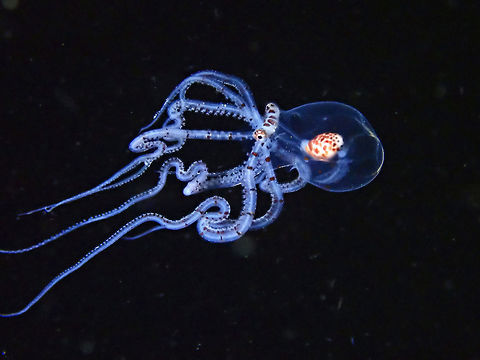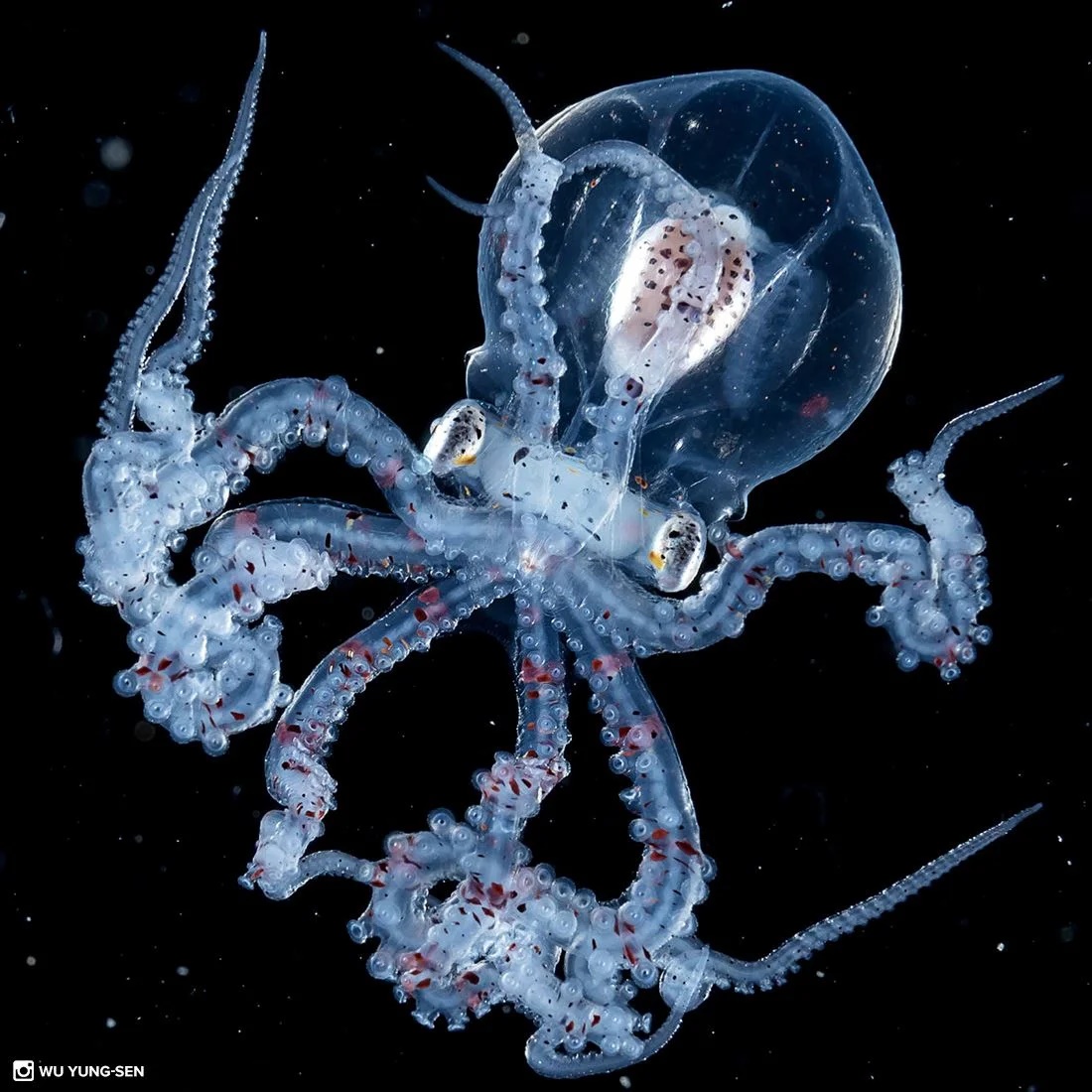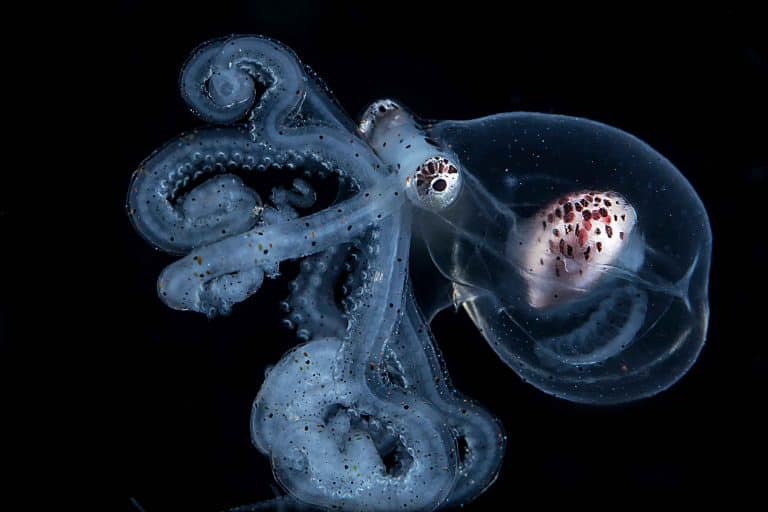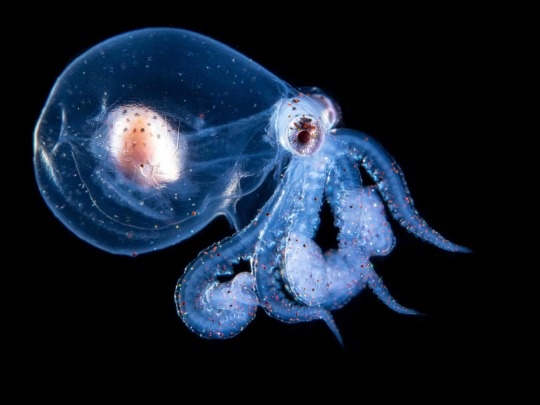A Wunderpus octopus (Wunderpus photogenicus) in its larval stage. At this stage, it is transparent and drifts in the open ocean as plankton.It was during a blackwater dive in Anilo in the Philippines that the Taipei-based photographer Wu Yung-sen encountered this rare specimen. The delicate baby octopus was exhibiting its brilliantly red brain within its translucent head. The Wunderpus photogenicus (literally meaning photogenic wonder) inhabits the coastal waters of the Pacific Ocean south of the Philippines. The adults display an individually unique pattern of white spots and bands along their arms, mantle, head, and eye stalks over a rusty brownish-red background. They are able to contort themselves and change their colour patterns when disturbed or threatened so as to either blend in with their surroundings or mimic some sea creatures like the venomous spiny lion fish to ward off their threats. However, the young larvae does not profit from this protective mechanism.An adult wunderpus octopus displays an individually unique pattern of white spots and bands over a rusty brown background. Even though each body pattern is unique to the individual, generally all wunderpus octopuses display a circular pattern of about six white spots at the posterior lip of its mantle, head and neck area. Some of these spots are fused.
As the wunderpus ages, their body patterns become more complex. Each body is consistently covered in a brownish-red coloration, both dorsally and ventrally, with white lateral bands and markings along their arms, mantle, head and eye stalks. Underneath, their suckers are a yellowish-cream color. The wunderpus has relatively smooth skin with papillae throughout body.
The wunderpus is also known for its ability to mimic other sea animals. The wunderpus can change its color patterns when disturbed or threatened. This quick-change artist is able to change its appearance, both color and shape, in a quick draw in order to get out of harm’s way. The change of its color patterns allows the wunderpus to either blend in with its surroundings or mimic a venomous species to scare its threat away. The ability to change patterns and impersonate other species has evolved to ensure the survival of the wunderpus.
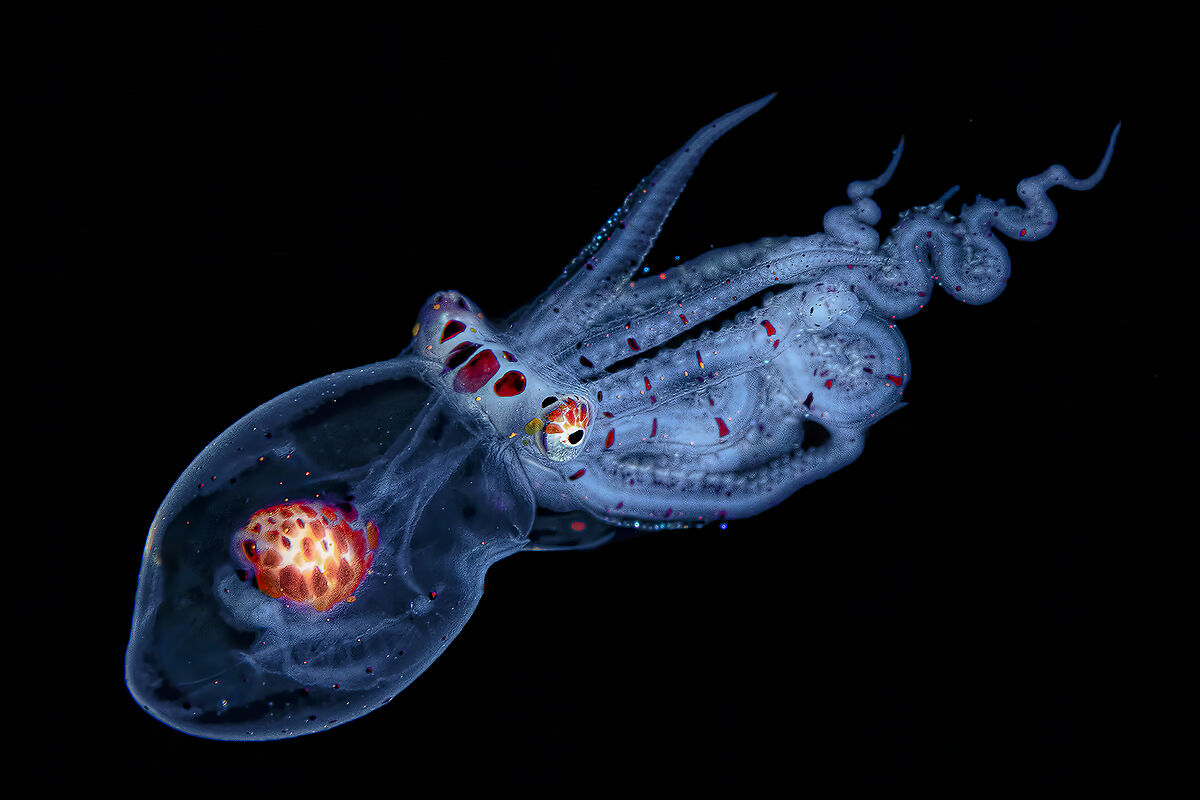
Cephalopods are difficult to track over time and distance due to many factors. Researchers usually use naturally occurring injuries and/or scars to identify individuals but this technique does not work for long term identification. An octopus is able to regenerate limbs and heal in a relatively short amount of time. Researchers can also use external tags to help track individuals but octopuses are able to remove external tags from their body making them tough to track. Other methods of tracking and identification include methods like tattooing but that puts the organism at risk so photo-identification is the best way to track this species.
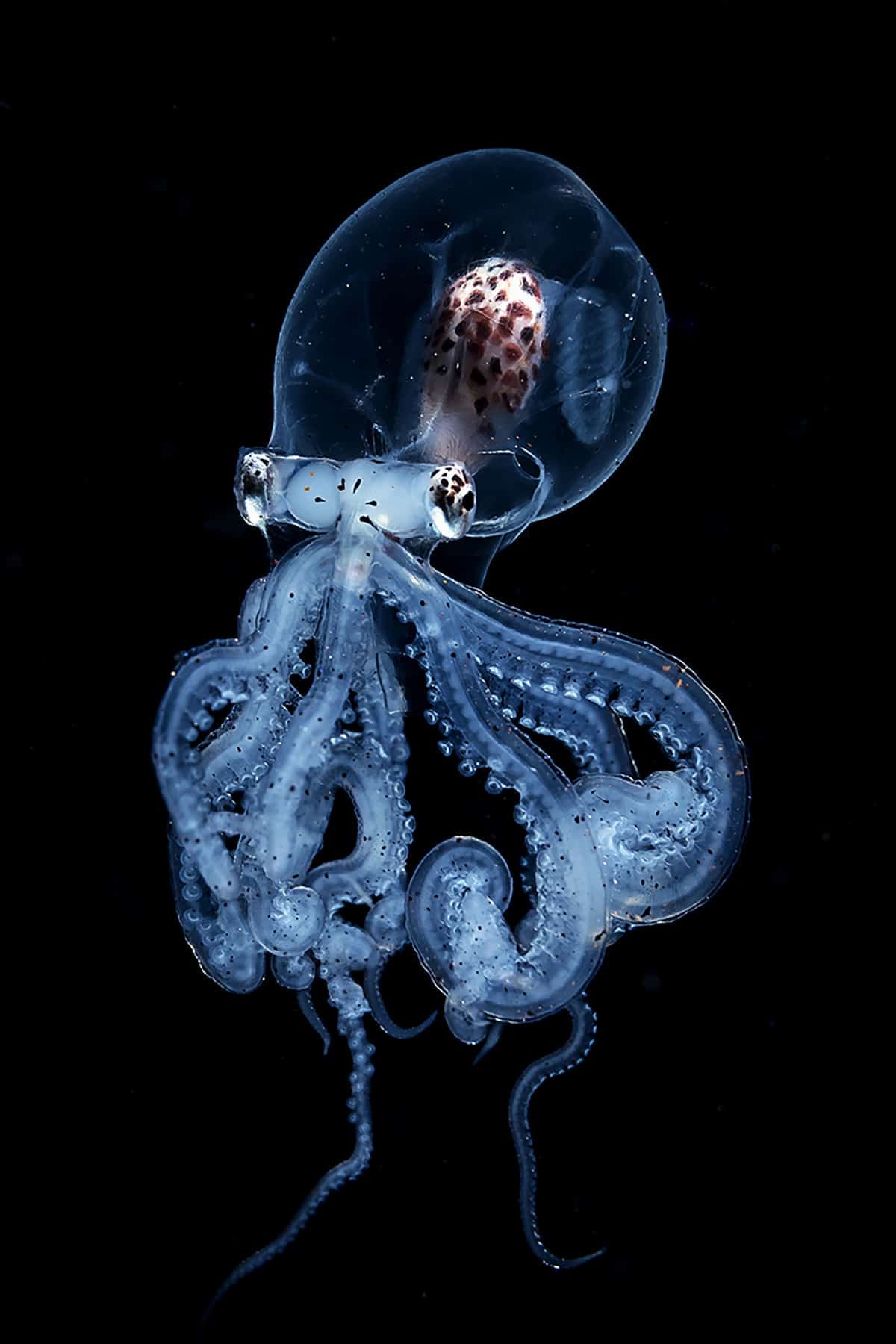
Due to the naturally occurring body color and patterns that the wunderpus exhibits, these color markings are often used as a method to identifying individuals. Photo identification allows for individuals or populations of a species to be identified and tracked without physically handling them. In order for photo-identification to successfully work, the body color and pattern must vary across individuals but remain constant over time. Each individual of the wunderpus exhibits unique white markings over a reddish-brown background, making photo identification the perfect method to track them over time. Being able to track an individual or population of a specific species like the wunderpus octopus, helps scientists study aspects like intraspecific behavioral interaction, survivorship, migration patterns and population estimates. Such observations and data sets facilitate our understanding of this under-documented species.
